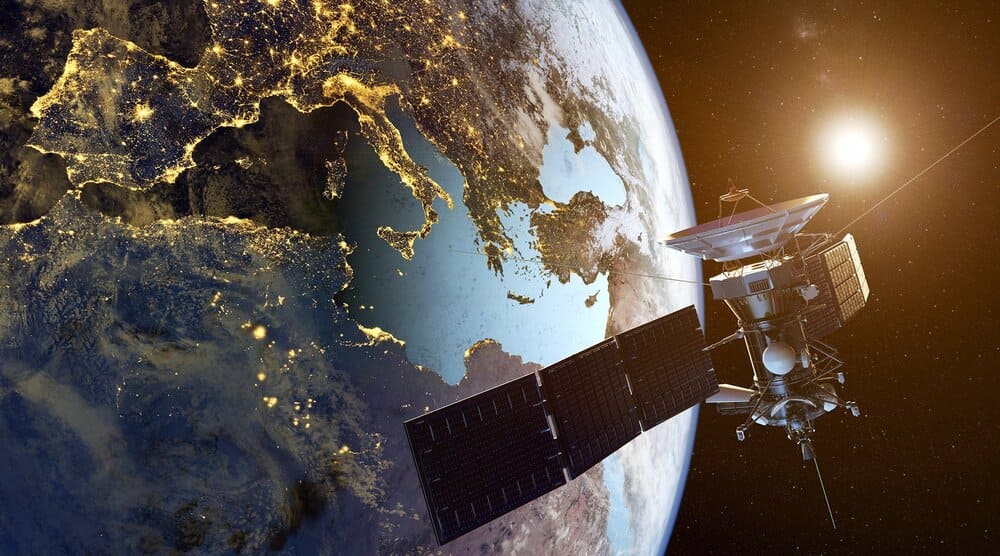The advancement of satellite technology has revolutionized the way we access television and internet services. Commercial satellites, orbiting the Earth, play a critical role in broadcasting television signals and providing internet connectivity, especially in remote and underserved regions. This article delves into the intricacies of satellite communication, its impact on television and internet services, and the future prospects of this dynamic technology.
The evolution of satellite communication
Satellite communication has come a long way since the launch of the first artificial satellite, Sputnik 1, in 1957. Today, we rely on a vast network of geostationary satellites and low-Earth orbit (LEO) satellites for a myriad of applications, from weather forecasting to global positioning systems (GPS). These space-based infrastructures have become indispensable in modern telecommunication, providing seamless connectivity and broadcasting services across the globe.
Satellite television: changing the viewing experience
Direct broadcast satellites
Direct broadcast satellites (DBS) have significantly altered the landscape of television broadcasting. These satellites transmit television signals directly to homes equipped with satellite dishes, eliminating the need for ground-based transmission towers. This direct-to-home (DTH) service offers a plethora of channels, including high-definition TV (HDTV) and on-demand content, enhancing the viewing experience for millions of households.
Satellite transponders
Satellite transponders are the backbone of satellite television. They receive signals from ground stations, amplify them, and retransmit them to specific regions on Earth. This process ensures that television signals maintain their quality over long distances, providing clear and uninterrupted broadcasts to viewers.
Global coverage
One of the most significant advantages of satellite television is its global coverage. Unlike terrestrial broadcasting, which is limited by the curvature of the Earth, satellites can cover vast areas, including remote and rural regions. This capability has democratized access to television, bringing entertainment and information to even the most isolated communities.
Satellite internet: bridging the digital divide
Satellite internet services
Satellite internet services have emerged as a vital solution for areas where traditional broadband infrastructure is lacking. By using communication satellites, these services provide high-speed internet access to remote and underserved regions, bridging the digital divide and enabling greater connectivity.
Broadband satellites
Broadband satellites, also known as high-throughput satellites (HTS), offer significantly higher data rates compared to traditional satellites. They achieve this by utilizing multiple spot beams, which focus on smaller areas, increasing the overall capacity and efficiency of the satellite. This innovation has led to improved internet speeds and reliability for users in rural and remote areas.
Satellite internet providers
Several companies have pioneered the development of satellite internet services, including HughesNet, Viasat, and SpaceX’s Starlink. These providers use a network of satellites to deliver internet connectivity to subscribers, offering various plans to cater to different needs and budgets. The competition among these providers has driven advancements in satellite technology, resulting in better service quality and affordability.
The mechanics of satellite communication
Satellite uplink and downlink
Satellite communication involves two main processes: uplink and downlink. The uplink is the transmission of signals from the ground station to the satellite, while the downlink is the transmission of signals from the satellite to the ground station. This bidirectional communication allows for the seamless exchange of data and signals, facilitating services such as television broadcasting and internet connectivity.
Satellite dishes and signal reception
Satellite dishes are crucial components of satellite communication systems. These parabolic antennas receive signals from satellites and transmit them to receivers, such as televisions or internet modems. Proper installation and alignment of satellite dishes are essential for optimal signal reception, ensuring high-quality service for users.
Orbital slots and geostationary satellites
Geostationary satellites are positioned in specific orbital slots, approximately 35,786 kilometers above the equator. These satellites orbit the Earth at the same rotational speed, appearing stationary relative to a fixed point on the ground. This geostationary orbit allows for continuous coverage of a particular area, making them ideal for television broadcasting and telecommunications.
Challenges and innovations in satellite communication
Latency and signal delay
One of the primary challenges of satellite communication, particularly for internet services, is latency. The time it takes for signals to travel between the Earth and the satellite can result in noticeable delays, affecting real-time applications such as video conferencing and online gaming. However, advancements in technology, such as the development of low-Earth orbit (LEO) satellites, are helping to mitigate these issues by reducing the distance signals need to travel.
Satellite network operators
Satellite network operators play a crucial role in managing and maintaining satellite communication systems. These operators are responsible for the launch, operation, and monitoring of satellites, ensuring that they function correctly and provide reliable services. Companies like Intelsat, SES, and Eutelsat are major players in this field, continually innovating to enhance the capabilities of satellite networks.
Future prospects
The future of satellite communication looks promising, with several exciting developments on the horizon. The deployment of mega-constellations, such as SpaceX’s Starlink and Amazon’s Project Kuiper, aims to provide global internet coverage, even in the most remote areas. Additionally, advancements in satellite technology, such as reusable launch vehicles and improved satellite designs, are expected to reduce costs and increase the efficiency of satellite communication systems.
Commercial satellites have profoundly transformed television and internet services, offering unparalleled coverage and connectivity. From direct broadcast satellites enhancing our viewing experience to broadband satellites bridging the digital divide, these space-based infrastructures are integral to modern communication. As technology continues to evolve, we can expect even greater advancements in satellite communication, further shaping the way we access and consume media.


